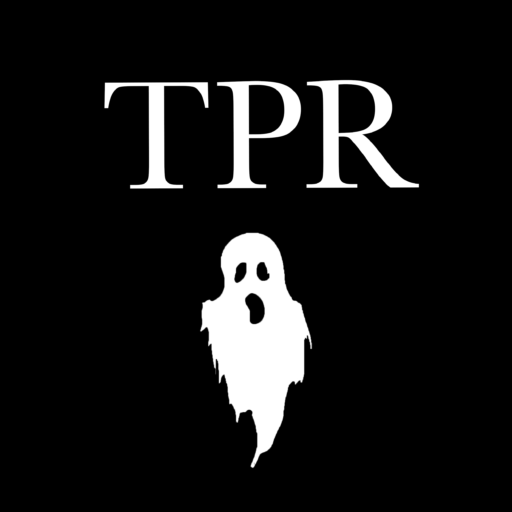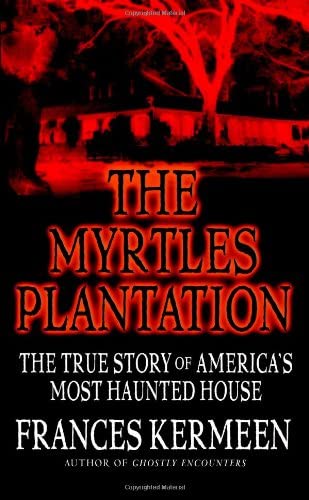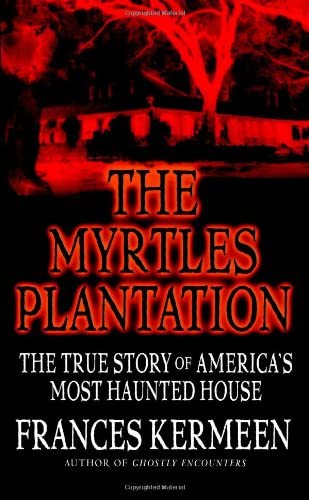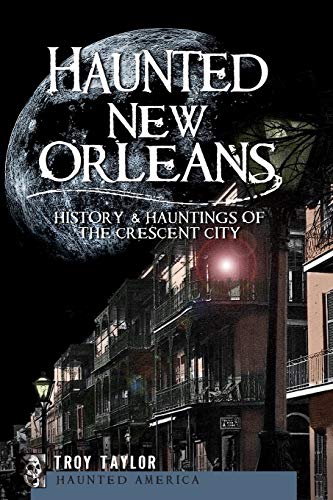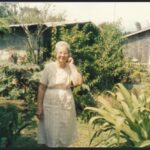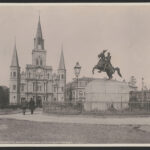I have been to The Myrtles Plantation three times in the past two years. The Myrtles Plantation is a quick day trip from New Orleans and is a great way to spend a Saturday. I have been on three tours of the property; two daytime tours and one evening ghost tour. While I have not seen any full body apparitions or the famous “Chloe” ghost, I have witnessed a few unexplainable events in the home. Recently, people have begun to question the validity of the haunted claims made by the tour guides of The Myrtles Plantation. While I ultimately believe the home to be haunted, I do think some of the stories stretch the truth of what is historically accurate. But, hey! What good ghost story doesn’t….
In this article, I’ll be going over the history of The Myrtles Plantation, the ghost stories, then giving you a glimpse into my personal experiences at The Myrtles Plantation.
What is The Myrtles Plantation?
The Myrtles Plantation is often referred to as the most haunted home in Louisiana. The home is located just two hours north of New Orleans, Louisiana in the historic town of St. Francisville. Constructed by General David Bradford in 1796, the creole cottage originally sat on 600 acres of land that extended to the edge of the Mississippi River. The home has witnessed the Yellow Fever epidemic, The American Civil War, and even murder. Today, the home operates as a bed and breakfast offering guests the experience of staying the night in this notoriously haunted estate.
A Brief History of The Myrtles Plantation
Before we can talk about the ghosts who inhabit The Myrtles Plantation, we must first talk about the history that created these hauntings. As mentioned above, the home was constructed by David Bradford in 1796 for his family. David Bradford decided to flee to Louisiana from his home state of Pennsylvania after partaking in the Whiskey Rebellion. Leaving his family behind, he floated down the Mississippi River eventually arriving in St. Francisville, LA. He purchased 600 acres and constructed what was originally called “Laurel Ridge.” In 1799, President John Adams pardoned David Bradford for his role in the Whiskey Rebellion at which point he moved his family down from Pennsylvania. Before moving to Louisiana, Bradford was a practicing attorney. To keep himself busy, he would often take in law students. One of his law students by the name of Clark Woodruff, would end up owning the home.
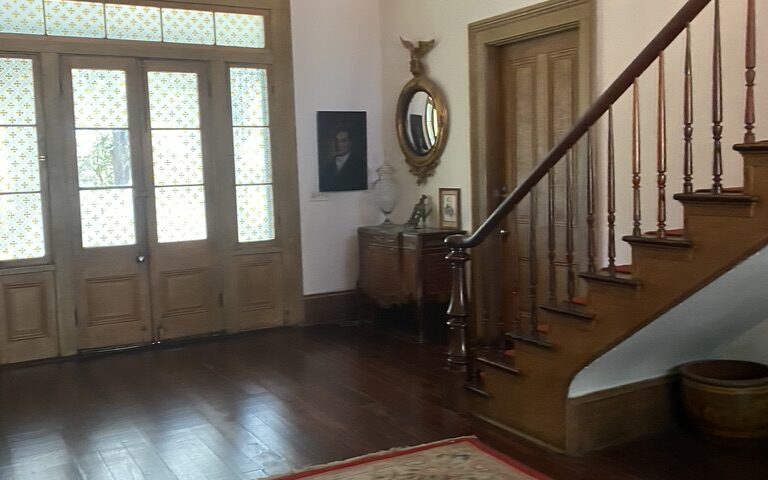
Bradford died in 1808 and his wife Elizabeth needed help running the cotton and indigo plantation her husband had left behind. Clark Woodruff and his wife Sarah moved in with Elizabeth and helped her run the plantation. Clark and Sarah had three children. Yellow Fever would eventually take the life of two of his children and in 1824, Sarah also died from disease. Clark continued to live in the home with Elizabeth, eventually purchasing it from her before her death in 1830. Clark Woodruff then left the home and moved to New Orleans, where he became involved in local politics. The plantation was then sold to the Stirling family in 1834.
The Stirling family would give extensive renovations to the home and renamed the property to The Myrtles Plantation after the large crepe myrtle trees that were present on the grounds. The Ruffin and Mary Stirling family raised nine children in the home, but only four survived to adulthood. By 1852, the Stirling’s daughter, Sarah, married a local attorney, William Winter. Winter and Sarah would become the next owners of the home after Ruffin Stirling died in 1854 from tuberculosis. Mary Stirling gave the house to her daughter Mary and her husband William in 1865 during The Civil War. Winter became the victim of a brutal murder. In 1870, he was called out of his house and shot on his front porch. Sarah continued to live in the home with her mother Mary until her death in 1878. She left the plantation to her son, Stephan, who eventually sold the home in 1886. From here, the plantation switched hands multiple times until being the personal residence of many families. By 1970’s, the home was purchased and used as a bed and breakfast.
The Ghosts of Myrtles Plantation: Hoax or Haunt?
There’s no question that The Myrtles Plantation is haunted. Numerous paranormal investigators and psychic mediums have visited the home and captured evidence of the haunting. Ghost Adventures even visited the property back in 2008 (Season 9, Episode 2) and had a myriad of strange things happen. They witnessed a ball roll down the stairs on its own, a dark shadow manifesting, rattling doors, and the spirit box saying “Winter” referencing the plantation’s old owner.
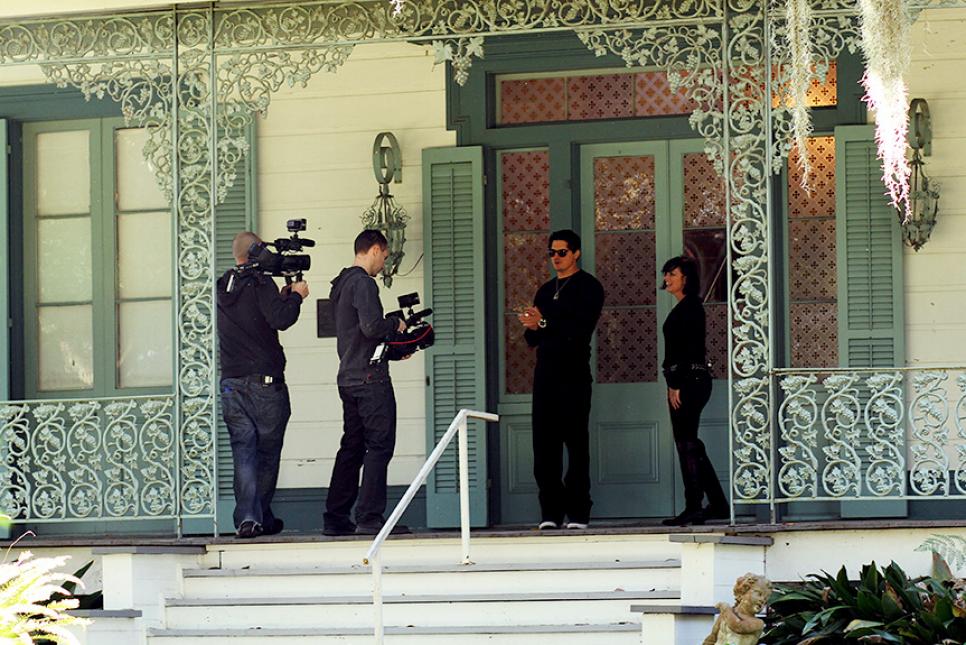
Source: https://www.travelchannel.com/shows/ghost-adventures/photos/ghost-adventures-myrtles-plantation-pictures
Even with all the paranormal activity in this home, people are still claiming that The Myrtles Plantation is a hoax. So why is this? I did some research and it appears that people have a problem with the history surrounding the home’s haunts. Many of the stories perpetuated by tour guides are ones rooted in legend rather than actual historical events. The largest discrepancy being The Myrtles’ most famous haunt, “Chloe.” Now before I explain why people have a problem with Chloe, let me tell the ghost stories that are recited by the tour guides at The Myrtles Plantation.
The Tours Story
The tour starts with the story of Chloe. Chloe was an enslaved woman who worked inside the home taking care of Clark Woodruff’s children. After Clark’s wife died, Chloe and Clark were having a secret affair. This all came to an end after Chloe was caught spying on Clark during a business meeting being conducted in the home. To make an example out of Chloe, he took her outside and cut her ear off. She was then forced to work in the kitchen.
Working in the kitchen was hellish work compared to working in the house. Between the Louisiana heat and open fires, the plantation kitchen was absolutely miserable. Chloe had to get back in the house. She concocted a plan that would put her back in Clark Woodruff’s good graces. She would bake a cake for Clark’s children with oleander leaves causing the children to become sick. When the children were inconsolable, Clark would beg her to come back inside and take care of them. What Chloe wasn’t aware of was how powerful a poison oleander actually was.
The poison cake killed Clark’s children and Chloe was traumatized. She had made the mistake of mentioning her plan to fellow slaves in the kitchen. Out of fear that they might be blamed as well, the other slaves hanged Chloe and dumped her body in the Mississippi River. Both Chloe and Clark Woodruff’s children are still seen wandering the halls of The Myrtles Plantation. A picture of Chloe’s ghost was captured in the 1990’s when owners were documenting the home for insurance purposes. In the picture you can see the apparition of a lady walking between the main house on the right and the detached kitchen on the left.
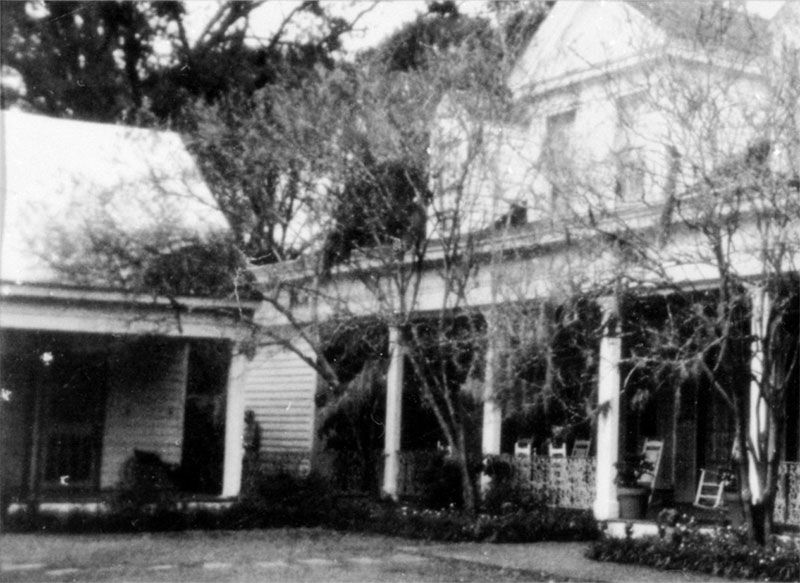
Source: https://myrtlesplantation.com/history-and-hauntings/history-of-myrtles-plantation
The next story is that of the haunted mirror in the home. It is apparently one of the most haunted items in the home. It is believed that the spirits of those who died in the house are trapped in the mirror. If you look closely you can see handprints, claw marks, and the face of Sarah Woodruff. Supposedly the mirror has been resilvered multiple times and after each refinishing the face and claw marks come back.
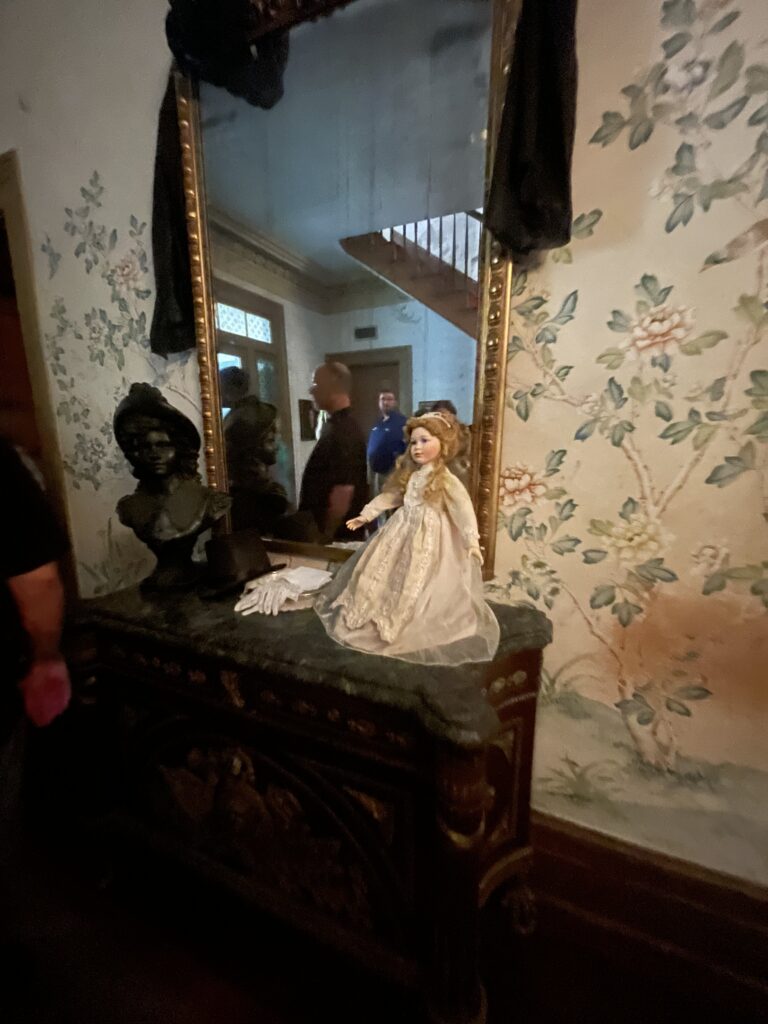
As the tour moves into the living room, we are told of the story of William Winter. One night as his family lay asleep, they are awakened by the sound of horse hooves. Two men yell through the front door that they need an attorney. When William answers the door the men shoot Mr. Winter and flee the scene. In agony, William calls for his wife’s help. She drags him back into the house and up the stairs where he eventually dies on the 17th step. To this day, people hear footsteps going up the stairs sounding like they are dragging something. If you listen closely and count you will hear them stop on the 17th step.
The Real Story
So where exactly do the tour guides go wrong? Well, history contradicts some of the things that are told on this tour. First and foremost, people believe that Chloe was never real. Slave records from the plantation show no name of “Chloe.” Furthermore, death records show that Clark Woodruff’s children died from yellow fever, not poisoning.
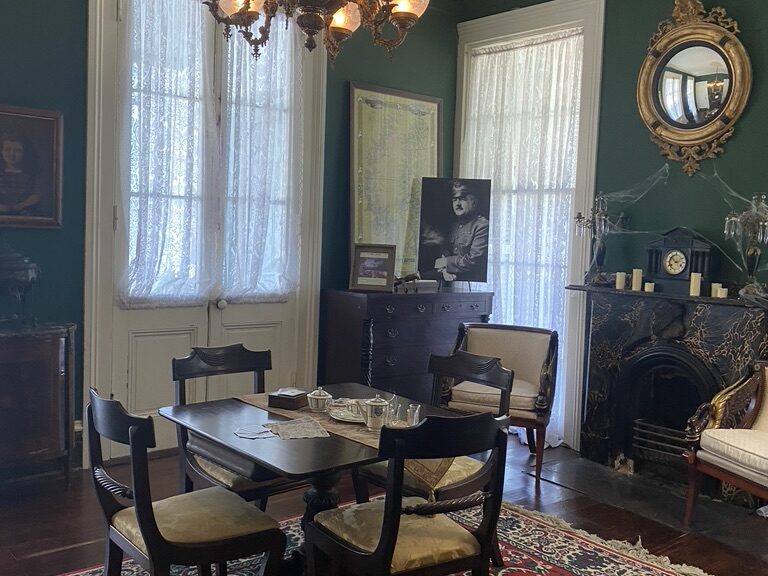
The story of the mirror is one that is also up for debate. It is hard to prove if the mirror was actually original to the home and therefore, people believe the mirror to be nothing more than a marketing tool. While one can definitely make out a face, claw marks, and handprints on the mirror, this could easily be debunked.
Finally, the story of William Winter is a bit exaggerated. William Winter was actually murdered in the doorway of his home, but in the doorway is where he would stay. William’s wife did not try to drag him up the stairs and back into his bedroom. Instead, William’s wife found him by the front door already deceased.
So where do these stories come from?
The origin of these stories can be traced back to the 1950’s. At this time a single lady named Majorie Munson was living in The Myrtles Plantation. Majorie reported having strange events at the home. When she asked around town if the plantation was haunted, Majorie was told that previous owners of the home reported seeing the apparition of a slave woman in a green bonnet roaming the grounds. People around town joked that this was the ghost of “Chloe.” With this, the legend of Chloe was born. In the 1970’s, Munson sold the plantation to the Myers family. The Myers also reported seeing strange things in the home. They also reported seeing the apparition of “Chloe”, as well as a Confederate soldier in the upstairs rooms of the house. Furniture was said to move on its own, doors were opening and closing by themselves, and a mirror falling off the mantle by itself. Frances Myers wrote a book documenting her experience of the home titled “The Myrtles Plantations: The True Story of America’s Most Haunted House.” The book was featured in Life Magazine, further perpetuating the legends behind The Myrtles Plantation. Since the release of this book and the publicity surrounding the plantation these stories continue to be told.
My Personal Experience Visiting The Myrtles Plantation
I want to start by saying that I love the Myrtles Plantation and think the tours are fun and absolutely worth the money. I have not yet stayed the night at The Myrtles, but from what I’ve heard and seen it is a pleasant stay. They also have an awesome restaurant called 1796. If ghosts aren’t your thing, you can still see some spirits at the bar while the rest of your family does a tour.
The first time I visited the plantation was about two years ago. I went on Halloween day with my girlfriend. We drove up from New Orleans, which is about a two hour drive from the city. We arrived in St. Francisville early to visit the Rosedown Plantation, as well as the St. Francisville Inn. The whole city of St. Francisville is supposedly very haunted. While having a drink at the St. Francisville Inn, our bartender told us about how haunted the town was and how she often saw spirits walking the grounds of the Inn. My girlfriend and I actually captured the picture of what appears to be a soldier walking in front of the Inn! You can read about that in this article.
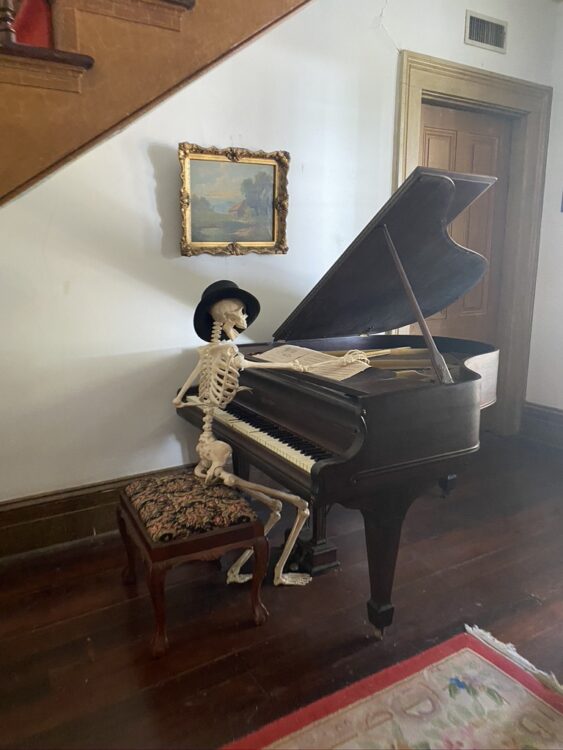
Around 2:00 PM, we arrived at the Myrtles. This was during the pandemic so the place was pretty quiet. We checked into our tour at the front desk then had a drink at the restaurant while we waited for our tour guide. My girlfriend hates ghosts so I had to loosen her up before the tour started. At around 3:00 PM we entered the home with our tour guide. Instantly upon entering the main foyer, the energy felt different. I felt a strong presence, almost the sensation that my body was being covered in smoke. The ten or so of us on the tour stood next to the main staircase while our tour guide began to tell the story of Chloe. Unbeknownst to my girlfriend, her parents and I told our tour guide to play a prank on her during the tour.
“I’m sorry, I just have to stop the tour for a second. I keep hearing the spirit calling out “Kaitlyn”. Is there a Kaitlyn in this group?”
She didn’t even fall for the joke for a second and instantly looked at me with the face of disapproval.
The tour guide continued the story of Chloe when I heard the french doors behind me begin to rattle. At first I thought it could have been the air conditioner turning on or someone bumping into the wall, but after it didn’t stop for a few seconds, I began to get weirded out. My girlfriend told me to “stop rattling the door” thinking I was somehow doing it. I couldn’t convince her until after we left the home that I wasn’t pranking her.
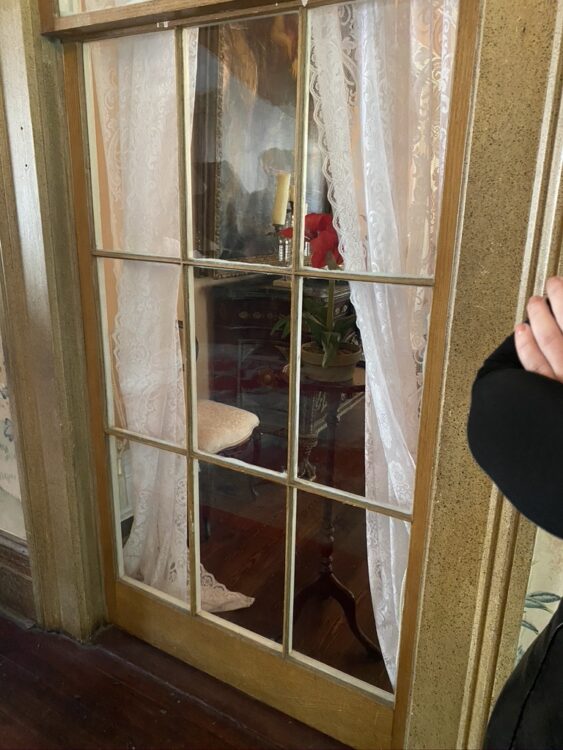
Before walking into the other rooms of the house, I stopped and looked into the infamous mirror. To be completely honest, this might be the only piece of evidence in the house I’m skeptical about. You can clearly see a face and handprints, and while I can’t explain this I feel like this could easily be debunked. Oils from peoples hands may have stained the silver long ago? Who knows.
The next rooms we visited didn’t feel as heavy as the foyer. We went into the downstairs bedroom where they reportedly saw Chloe sitting in a rocking chair, then into the dining room. Both these rooms seemed to have a peaceful presence about them. When we entered the living room however, it felt negative again. Our tour guide informed us this is where they would conduct seances and the door attached to the room is where William Winter was shot. Something about this space felt off. I felt kind of dizzy and confused (No, it wasn’t the alcohol). It was almost like the feeling you get when you drink too much caffeine and you feel like you can’t focus on any one thing.
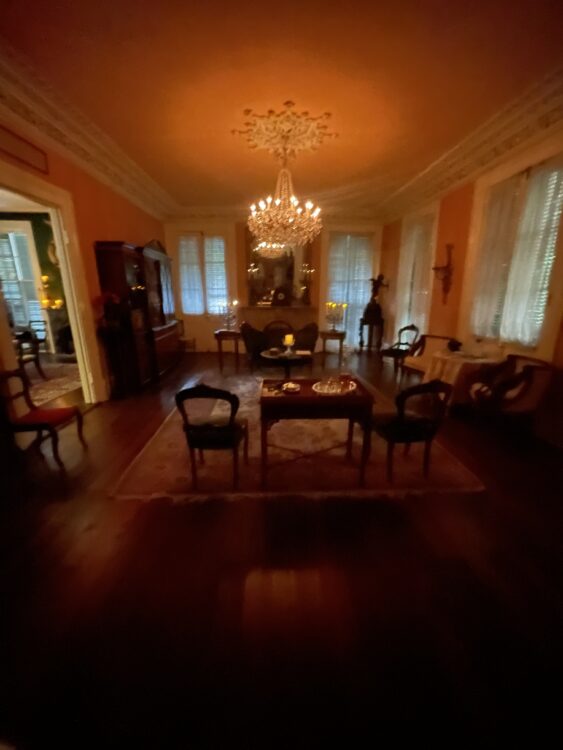
The tour is relatively short, as you cannot visit the upstairs of the home. The upstairs rooms are reserved for guests and people staying at the bed and breakfast (which I hope to do sometime soon). While I didn’t see any apparitions or hear any voices, I definitely felt uneasy in the home. The rattling door experience didn’t stand out to me until I got home and watched the Ghost Adventures episode where they go to Myrtles Plantation. In the episode, they capture the same door rattling unexplainably right before their camera malfunctions. This kind of proved to me that maybe this was more than a coincidence. Just recently, I watched a couple of YouTubers named Sam and Colby investigate the Myrtles Plantation. In the video, their psychic friend states that she senses the presence of a woman standing in front of that door.
Final Thoughts:
I understand why people might be claiming that the Myrtles Plantation is a hoax, but I also love the folklore that is told surrounding the home. Also, who are we to say that Chloe wasn’t real? Sure, there’s no documentation that Chloe was ever an enslaved person at the Myrtles, but don’t you think Clark Woodruff would have wanted to cover that up? If the story IS true, I don’t think Mr. Woodruff would have wanted the whole town knowing the reason his children died is essentially because he was having an affair with a slave. Yes, documentation states that his children died from Yellow Fever, but autopsies were not popular yet. Sure, I think it’s an unlikely story, but that’s what makes it fun!
Even if Chloe wasn’t real and William Winter didn’t actually die on the 17th step, I still believe the home is very haunted. Many people still lost their lives by murder, Yellow Fever, and enslavement at this property. I think many of these spirits have yet to cross over to the other side and are replaying scenes from their lives over and over again.
I would highly recommend The Myrtles Plantation to anyone interested in history or the paranormal. If you are staying in New Orleans for more than a couple days you should definitely make the trip. If you don’t have a car, a local company called Crescent City Tours offers custom travel to and from the plantation. I will link to them down below.
Ghost Adventures Visit The Myrtles Plantation
Some Books I Recommend If You Liked This Article
